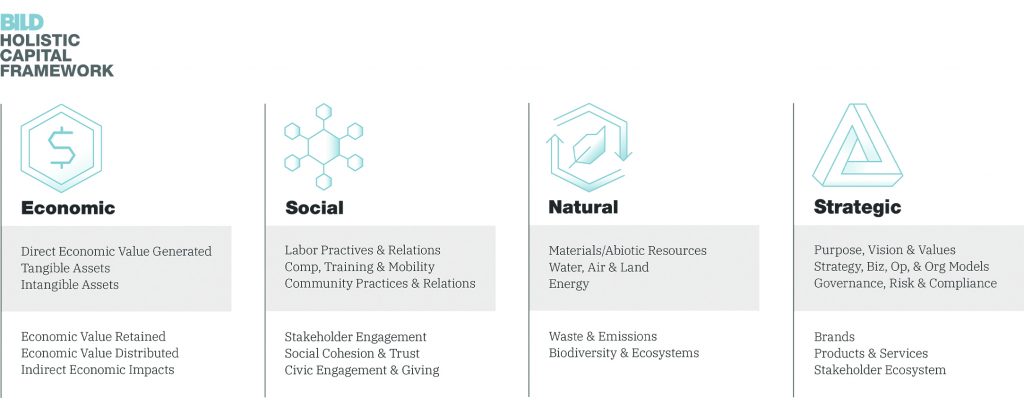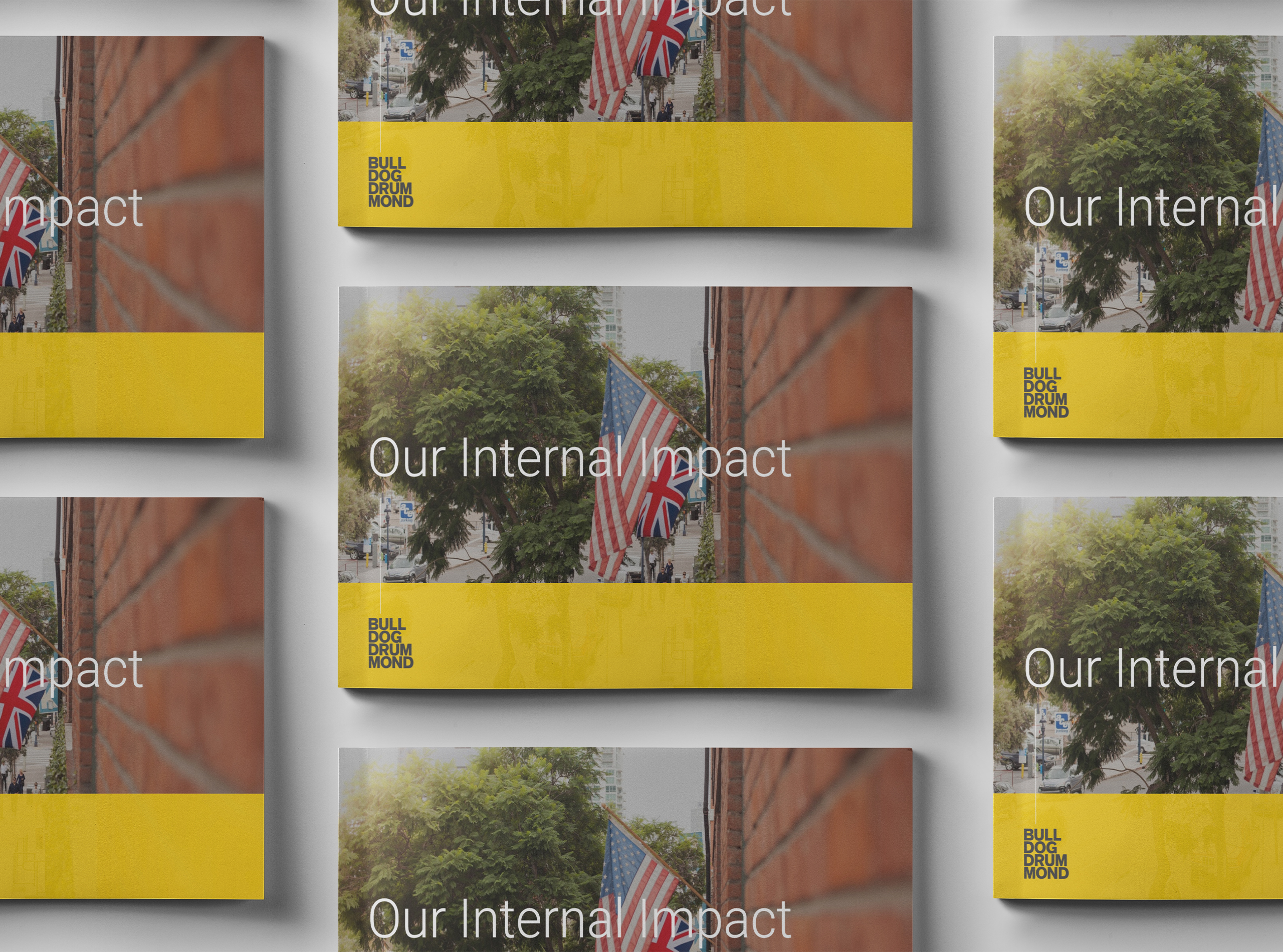
Redefining Value
My mom is smarter than I am.
To anyone who has met both of us, this is hardly a revelation. It is like saying that George Clooney is more handsome than Winston Churchill. It’s objectively true.
In recent years, I have been reminded of this truth in part because of how business has evolved and how she somehow understood the holistic value of that progression. She consciously supported sustainable and responsible companies through her purchases and investing long before it was fashionable.
Let’s set the record straight: a new era of business isn’t coming; it is already here. Multinational firms like Apple and Microsoft have made meaningful statements in terms of their commitment to delivering sustainable, long-term value. Financial giants like State Street and Blackrock have fundamentally altered the direction of investment strategies. Sustainability-minded movements like B-Corp and Conscious Capitalism continue to mature and influence reporting trends. Even the Business Roundtable, a collective of more than 100 of the largest, most influential brands of our time, decided to redefine the purpose of a business to benefit all stakeholders rather than only shareholders. This new era of business is both exciting and uncertain, promising and increasingly complex (as 2020 has beat into our collective heads).
My mom is not a businessperson, but she understood that it was not enough to simply hope that companies would “do good” and expect those good intentions to drive fundamental system change. She comprehended (long before I did) that the entire ecosystem needed to reshape and redefine the concept of holistic value. She was the first purpose-driven investor that I knew who envisioned a world where business would create more value for more people. It only took me two decades to catch up.
THE DEFAULT DEFINITION OF VALUE
Milton Friedman’s shareholder primacy framework has been the dominant school of economic thought over the last five decades. This paradigm prioritizes shareholder returns over any other form of value, and it has driven immense economic value for shareholders. However, the singular profit focus has also led to short-termism and severe underinvestment in non-financial assets, which has had negative long-term impacts on people and the planet. It is important to note that economic profit is not the enemy. It is good and necessary, but profits can and should be leveraged as an enabler of doing more good for more people. But how?
We need new ways to think about value and value creation.
THE PARADOX OF VALUE
An expanded definition is helpful. However, it doesn’t address a simple but critical concept called the paradox of value. This concept was introduced by Adam Smith, the father of capitalism, a few hundred years ago. For those of you who aren’t economics geeks, check out this 3-minute video primer on the concept.
In the most simple terms, the value of something can be expressed in terms of its exchange value or its use value. The default for business has been to seek to satisfy the more tangible and short-term exchange value, meaning the product or service is worth what someone is willing to pay for it right now. While this is certainly a key form of value, this simple economic default mode is becoming less complete as a broad range of stakeholders seek multi-dimensional forms of value.
Alternatively, use value is often long-term in nature and can be either tangible or more intangible (like an experience). What we are seeing is more people lean into preservation of assets that are:
- shared
- critical for life and happiness in ways not easily defined by money
- long-term in their value provision, cost to repair and use (the climate, earth’s rare resources)
The idea in either case should be to maximize the “utility” that best satisfies the needs of all stakeholders, not just the shareholder. If you think of the young people in your life, it’s likely that they are more motivated by non-financial utility than any previous generation. This generation is moving toward a more holistic, long-term value perspective and any business that ignores this fact is in trouble.
LEVERAGING CAPITAL CREATES VALUE
While value is a fairly abstract concept, it may be easier to connect it to a more tangible idea: capital. Businesses create value by leveraging capital for the benefit of stakeholders. When most of us think about the term capital, we gravitate to the most tangible things like equipment and cold hard cash. However, in the world of Business 2.0, we need to define and recognize four basic forms of capital that can be leveraged to create value:
- Economic Capital (e.g. cash, equity, debt)
- Social Capital (e.g. people, teams, groups, society)
- Natural Capital (e.g. energy, land, water, air)
- Strategic Capital (e.g. ideas, plans, designs, intellectual property)

To demonstrate these forms of capital, let’s use the iPod launch in 2001. It is easy to forget how revolutionary this product was at the time, but consider how Apple leveraged all four forms of capital.
First, the idea. The concept, design and engineering required to conjure a completely new product (jukebox in your pocket) in a new category is an incredible example of leveraging strategic capital. Dozens of firms at the time could have had similar R&D product outcomes.. However, the ability to focus on an entirely new business model required significant strategic thinking and innovation. This strategic capital could easily have been deployed on any existing Apple product at the time, so the opportunity costs were real.
Obviously, something at this scale required significant economic capital. While there is no definitive answer on the amount of investment, at a minimum, it required millions of dollars of high-risk development time. It’s easy to gloss over this in hindsight, but clarity from leaders was a must to commit financial resources to an uncertain future.
In 2001, the idea of optimizing natural capital was not in vogue. It was a different time, where most decisions were simply hardware manufacturing choices seeking the lowest possible price. While that certainly drove outsourcing products through China, the idea of form factor and usability drove very specific long-term design and materials decisions. That design was viewed as functional art by early users and contributed to the long-term brand value.
The true genius of the iPod launch was connecting the hardware product to a completely new world of social capital called iTunes. This virtual community enabled artists, music labels and consumers to connect in completely novel and empowering ways. The social value of the product was truly revolutionary.
Interestingly, all forms of invested capital in this case (whether recognized or not) contributed to the outsized financial success and growth of the company. What might Apple have been capable of doing if they’d understood and intentionally leveraged all of these powerful forms of holistic value creation at the time?
SO… WHAT DO WE DO NOW?
What does this all mean in practical terms? How can leaders make actual progress toward generating more value for more people without failing their shareholders?
There is no perfect solution or best practices, so stop chasing them. Be like my mom and seek progress, not perfection. A few smart, strategic and integrated actions on material items will set you on the path of sustainable competitive advantage.
Here are four pragmatic suggestions to consider based on our experience. You will definitely not have decades to catch up, so get started now.
Map your entire ecosystem.
Value is likely hidden all over your organization. But we see even more untapped value when we help our clients explore beyond the organizational and entity boundaries. Suppliers, alumni, trade associations… completing a full map of your business landscape forces leaders to seek value opportunities for more people.
Avoid the trap of simply translating non-financial capital into economic terms.
While this approach is fairly easy to comprehend and often more comfortable to express on balance sheets, we believe this risk leads to false equivalence and poor decisions. For example, when trying to quantify the level of social cohesion in an organization, it is very hard to equitably compare the multi-dimensional value to the hard costs or returns of implementing such a program. It requires deep strategic thinking, not just a simple cost comparison.
Decipher and optimize connections between all forms of capital.
This suggestion is probably the hardest to execute, but is also the most beneficial. While this article presents clear lines between the forms of capital and types of value, in real life the lines are very blurry. It’s hard to specifically determine how investments in your supply chain impact your workforce, your shareholders or the citizens in the town where your factories are located. These are multivariate challenges and require a deep dive to make informed and material decisions.
Upgrade your enterprise risk management capabilities.
A majority of mid-market firms that we partner with underinvest in risk management. That is going to become a serious problem in the future when trying to deliver even more value to more stakeholders. The reputational risk of doing nothing, or even worse, doing more harm, is increasingly punitive in modern business. The COVID-19 crisis and Black Lives Matter movement have both taught difficult lessons to reactive organizations. Taking a proactive long-term view of the connected ecosystem risks is now the required way of doing business.
The era of expanded value is emerging and uncertain, so don’t believe anyone that says they have all the answers. There are certainly risks involved in moving in this direction, but it reminds us of a famous JFK quotation that we often reference:
“There are costs and risks to a program of action, but they are far less than the long range risks and costs of comfortable inaction.” — John F. Kennedy


Uncommon Person: Chad Hutson

Our Internal Learning & Impact at Bulldog Drummond

The One Decision by Employers in 2021 that Means Everything

What I Wish I Knew

Standing Up Inside

Uncommon Person: Gregg Imamoto

Five Things Every Company Should Know about ESG

Redefining Value

Uncommon Person: Chris Baréz-Brown

It’s Time For A Whole Lotta Common Good

Did You Choose Humanity?

Uncommon Partnership: Violux

Here’s How

Uncommon Person: Santhosh Nair

Designing Strategy For A Complex World

Responsibility & Relevance for Brands

